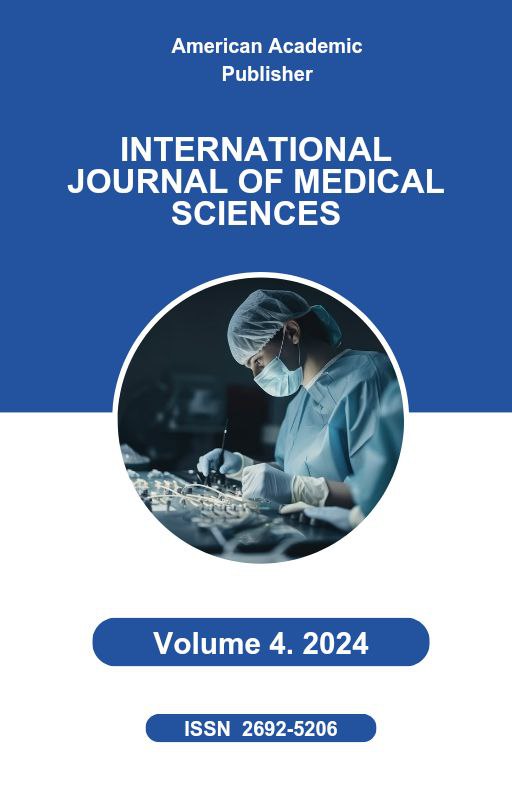 Articles
| Open Access |
https://doi.org/10.55640/
Articles
| Open Access |
https://doi.org/10.55640/
HISTOLOGY AND REGENERATION POTENTIAL OF NERVOUS TISSUE
Karimova Gulyora Sanjarbek qizi , Student of Andijan Branch of Kokand University Faculty of Medicine, 1st Year, Department of Therapeutic WorkAbstract
Nervous tissue is considered the most complex and specialized tissue in the human and animal body. It consists of nerve cells—neurons—and supportive glial cells, and it forms both the central (brain and spinal cord) and peripheral (peripheral nerves and ganglia) nervous systems. The main function of nervous tissue is to receive, transmit, and respond to information from both external and internal environments. Its morphological structure and cellular/tissue-level organization play a crucial role in the performance of its physiological functions.
The regeneration of nervous tissue, i.e., its ability to recover after injury, is one of the most pressing areas of modern neurobiology. The regenerative potential of the central nervous system (CNS) is significantly lower than that of the peripheral nervous system (PNS). This implies a limited capacity for full recovery after injuries to the brain or spinal cord. In contrast, the peripheral nervous system, particularly due to the activity of Schwann cells, demonstrates a comparatively higher regenerative capacity. This difference is mainly attributed to the presence or absence of factors within the tissue microenvironment that either promote or inhibit regeneration.
Recent studies have shown that, although limited, neurogenesis—the formation of new neurons—also occurs in the central nervous system. Neuroblast formation has been particularly observed in the hippocampus and the subventricular zones surrounding the lateral ventricles in adults. This suggests that nervous tissue has a certain potential for self-repair under specific conditions. However, such processes are typically slow and rarely lead to complete regeneration.
One of the main obstacles to regeneration in the CNS is the formation of glial scars (gliosis) caused by the proliferation of glial cells, especially astrocytes, at the injury site. These scars act as physical and chemical barriers that restrict nerve impulse transmission and axon growth. Therefore, many modern studies aim to overcome these barriers, identify biomolecules that stimulate regeneration, and enhance neuronal recovery using neurotrophic factors.
This article analyzes the histological structure of nervous tissue, the interaction between neurons and glial cells, mechanisms of regeneration, differences between the CNS and PNS, and modern therapeutic and restorative approaches (including neurostimulation, biomaterials, and stem cell therapy). It also explores recent experimental and clinical advancements as well as the existing challenges in the field of neural regeneration.
A deeper understanding of the regenerative potential of nervous tissue not only helps address challenges in surgery, traumatology, and neurology but also lays a scientific foundation for the future treatment of neurodegenerative diseases.
Keywords
Nervous tissue, neurons, glial cells, regeneration, central nervous system (CNS), peripheral nervous system (PNS), neurogenesis, gliosis, Schwann cells, astrocytes, axonal regeneration, neurotrophic factors, histological structure, nerve injury, nerve repair, biomaterials, stem cells, neurostimulation, cellular plasticity, microenvironment, functional recovery.
References
Cajal, S. R. y. (1928). Degeneration and Regeneration of the Nervous System. Oxford University Press.
Jessen, K. R., & Mirsky, R. (2005). The origin and development of glial cells in peripheral nerves. Nature Reviews Neuroscience, 6(9), 671–682.
Ming, G., & Song, H. (2005). Adult neurogenesis in the mammalian central nervous system. Annual Review of Neuroscience, 28, 223–250.
Temple, S., & Alvarez-Buylla, A. (2012). Stem cells in the adult mammalian central nervous system. Annual Review of Cell and Developmental Biology, 28, 463–489.
Silver, J., & Miller, J. H. (2004). Regeneration beyond the glial scar. Nature Reviews Neuroscience, 5(2), 146–156.
Park, K. I., Teng, Y. D., & Snyder, E. Y. (2019). Stem cells in neural regeneration. Annual Review of Neuroscience, 35, 415–436.
Gage, F. H., et al. (2020). Adult neurogenesis and regeneration in the central nervous system. Journal of Clinical Investigation, 130(2), 499–507.
Matveev, V. V., & Knyazev, E. A. (2016). Molecular Histology of the Nervous System. Moscow: Nauka.
Bozorov, B. B., & Karimov, I. I. (2021). Regeneration and restoration challenges of nervous tissue. Journal of Medicine and Biology, 4(2), 85–90.
Gulyamov, A. A., & Sodiqov, T. T. (2022). Modern approaches in neurohistology. Scientific Bulletin of UzNU, 5(1), 33–38.
Kim, D. H., & Zahir, T. (2017). Biomaterials for neural regeneration. Trends in Biotechnology, 35(7), 571–582.
Yuldasheva, G. Sh. (2020). Regeneration processes in nervous system injuries. Theory and Practice of Medicine, 3(1), 91–96.
Geuna, S., Raimondo, S., & Ronchi, G. (2009). Histological techniques for the study of peripheral nerve regeneration. Microscopy Research and Technique, 72(4), 248–257.
Liu, K., Tedeschi, A., Park, K. K., & He, Z. (2011). Neuronal intrinsic mechanisms of axon regeneration. Annual Review of Neuroscience, 34, 131–152.
Article Statistics
Downloads
Copyright License

This work is licensed under a Creative Commons Attribution 4.0 International License.

